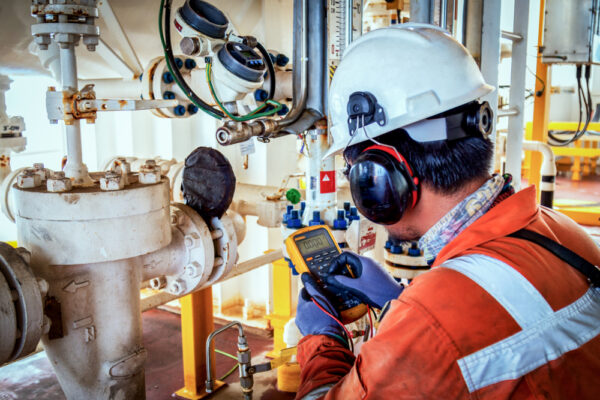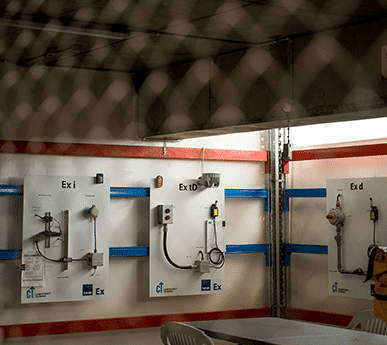Indicators on Roar Solutions You Should Know
Indicators on Roar Solutions You Should Know
Blog Article
The Buzz on Roar Solutions
Table of ContentsGetting My Roar Solutions To WorkA Biased View of Roar SolutionsThe Ultimate Guide To Roar Solutions
In such an atmosphere a fire or surge is possible when 3 basic problems are satisfied. This is typically referred to as the "dangerous area" or "combustion" triangular. In order to protect installments from a potential surge an approach of evaluating and categorizing a potentially hazardous location is needed. The function of this is to ensure the proper choice and installment of devices to eventually prevent a surge and to make certain security of life.
(https://sketchfab.com/roarsolutions)
No equipment should be mounted where the surface area temperature level of the tools is higher than the ignition temperature level of the provided threat. Below are some common dust hazardous and their minimum ignition temperature. Coal Dust 380C 225C Polythene 420C (melts) Methyl Cellulose 420C 320C Starch 460C 435C Flour 490C 340C Sugar 490C 460C Grain Dirt 510C 300C Phenolic Material 530C > 450C Aluminium 590C > 450C PVC 700C > 450C Residue 810C 570C The probability of the hazard existing in a concentration high enough to cause an ignition will certainly vary from area to place.
Hazardous area electric tools possibly made for usage in greater ambient temperature levels. Area Repair By Authorised Employee: Difficult testing might not be called for nevertheless details treatments might need to be complied with in order for the tools to preserve its 3rd event score. Each piece of devices with an unsafe ranking need to be assessed separately.
Some Known Facts About Roar Solutions.
The tools register is a comprehensive database of devices records that consists of a minimum collection of areas to determine each thing's place, technological criteria, Ex classification, age, and environmental information. This info is essential for tracking and taking care of the devices properly within dangerous areas. On the other hand, for periodic or RBI sampling examinations, the grade will certainly be a mix of Detailed and Close evaluations. The proportion of Detailed to Close inspections will certainly be figured out by the Tools Danger, which is analyzed based on ignition risk (the probability of a source of ignition versus the chance of a flammable environment )and the unsafe area category
( Area 0, 1, or 2). This variant will certainly additionally affect the resourcing requirements for job prep work. Once Whole lots are specified, you can develop sampling plans based upon the example size of each Lot, which describes the number of random equipment things to be inspected. To identify the needed sample size, two elements need to be reviewed: the size of the Lot and the category of inspection, which indicates the level of effort that need to be used( reduced, normal, or boosted )to the inspection of the Whole lot. By integrating the group of examination with the Whole lot size, you can after that develop the appropriate denial requirements for an example, suggesting the allowed variety of malfunctioning things found within that sample. For even more details on this process, please refer to the Power Institute Standards. The IEC 60079 conventional suggests that the optimum period between examinations need to not go beyond three years. EEHA evaluations will likewise be performed outside of RBI projects as part of arranged maintenance and devices overhauls or repair services. These inspections can be attributed toward the RBI example dimensions within the affected Great deals. EEHA assessments are carried out to identify mistakes in electrical tools. A weighted racking up system is important, as a single tool may click have numerous mistakes, each with varying degrees of ignition threat. If the mixed score of both assessments is less than two times the fault rating, the Great deal is deemed appropriate. If the Great deal is still considered undesirable, it should undertake a full assessment or reason, which might set off more stringent evaluation methods. Accepted Lot: The causes of any mistakes are determined. If a typical failure setting is located, extra tools may need examination and repair service. Mistakes are classified by extent( Security, Integrity, Home cleaning ), making certain that immediate issues are evaluated and addressed promptly to mitigate any type of impact on security or procedures. The EEHA database must track and record the lifecycle of faults in addition to the restorative activities taken. Executing a robust Risk-Based Assessment( RBI )strategy is important for making sure compliance and safety and security in taking care of Electrical Equipment in Hazardous Locations( EEHA) (high voltage courses). Automated Fault Rating and Lifecycle Management: Effortlessly manage faults and track their lifecycle to boost assessment accuracy. The intro of this assistance for risk-based assessment better enhances Inspectivity's setting as a best-in-class option for regulative conformity, as well as for any asset-centric examination usage situation. If you want finding out more, we invite you to request a demonstration and discover exactly how our option can transform your EEHA administration processes.
Not known Incorrect Statements About Roar Solutions

In regards to eruptive threat, an unsafe location is an atmosphere in which an eruptive environment is existing (or might be expected to be existing) in quantities that require special precautions for the building and construction, setup and use of devices. eeha. In this write-up we check out the difficulties dealt with in the work environment, the risk control procedures, and the required competencies to function securely
It issues of modern-day life that we produce, save or manage a range of gases or liquids that are considered flammable, and a series of dirts that are deemed flammable. These compounds can, in particular conditions, develop eruptive atmospheres and these can have major and unfortunate effects. Most of us know with the fire triangular eliminate any type of among the 3 elements and the fire can not happen, yet what does this mean in the context of dangerous locations? When breaking this down into its simplest terms it is basically: a mix of a particular quantity of launch or leakage of a specific substance or material, mixing with ambient oxygen, and the existence of a resource of ignition.
In the majority of circumstances, we can do little about the degrees of oxygen airborne, however we can have considerable impact on sources of ignition, as an example electric tools. Hazardous locations are recorded on the hazardous area category drawing and are determined on-site by the triangular "EX-SPOUSE" sign. Here, amongst other key info, areas are split into 3 types depending upon the risk, the chance and period that an eruptive environment will certainly exist; Area 0 or 20 is considered the most hazardous and Zone 2 or 22 is regarded the least.
Report this page